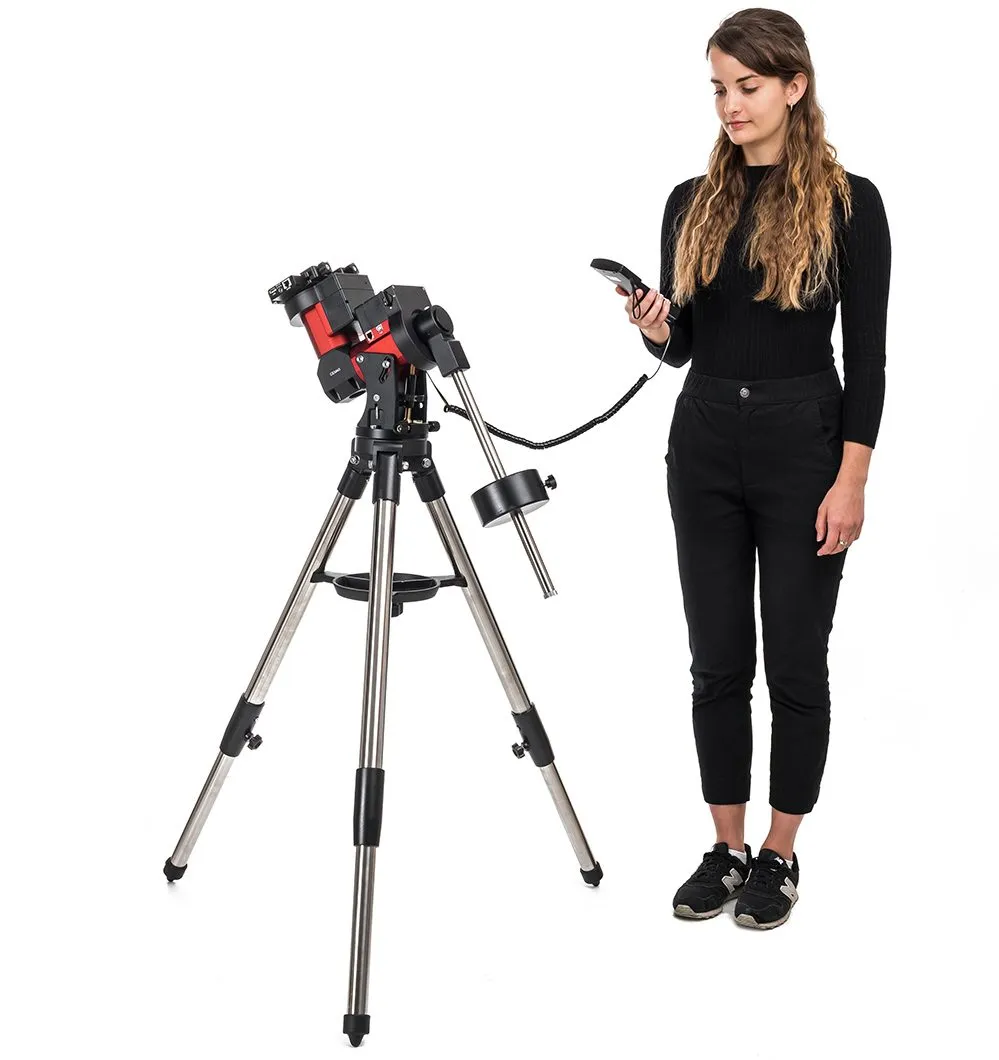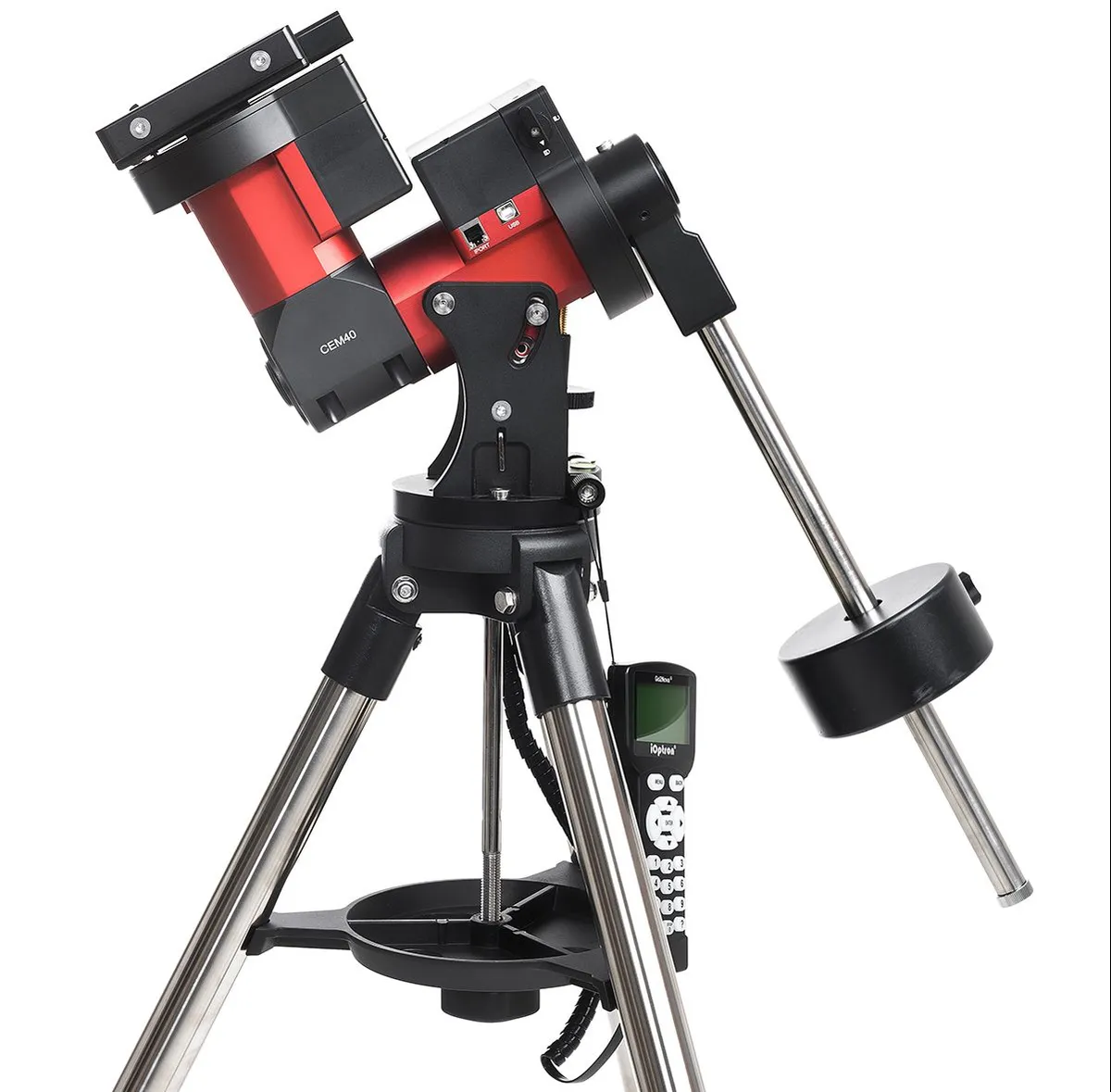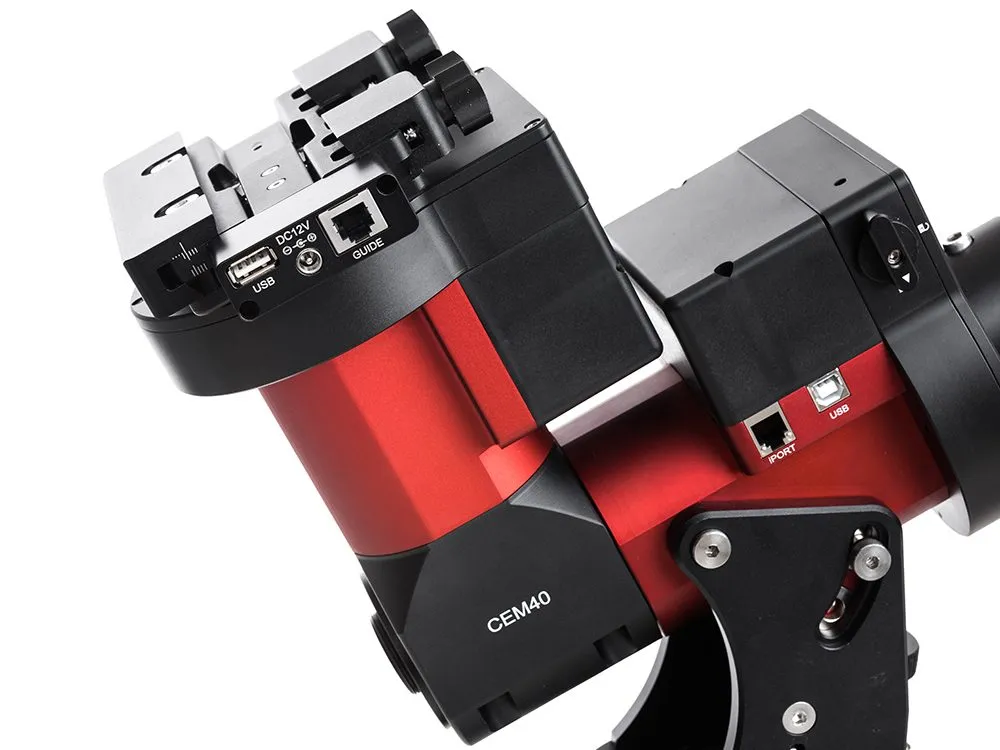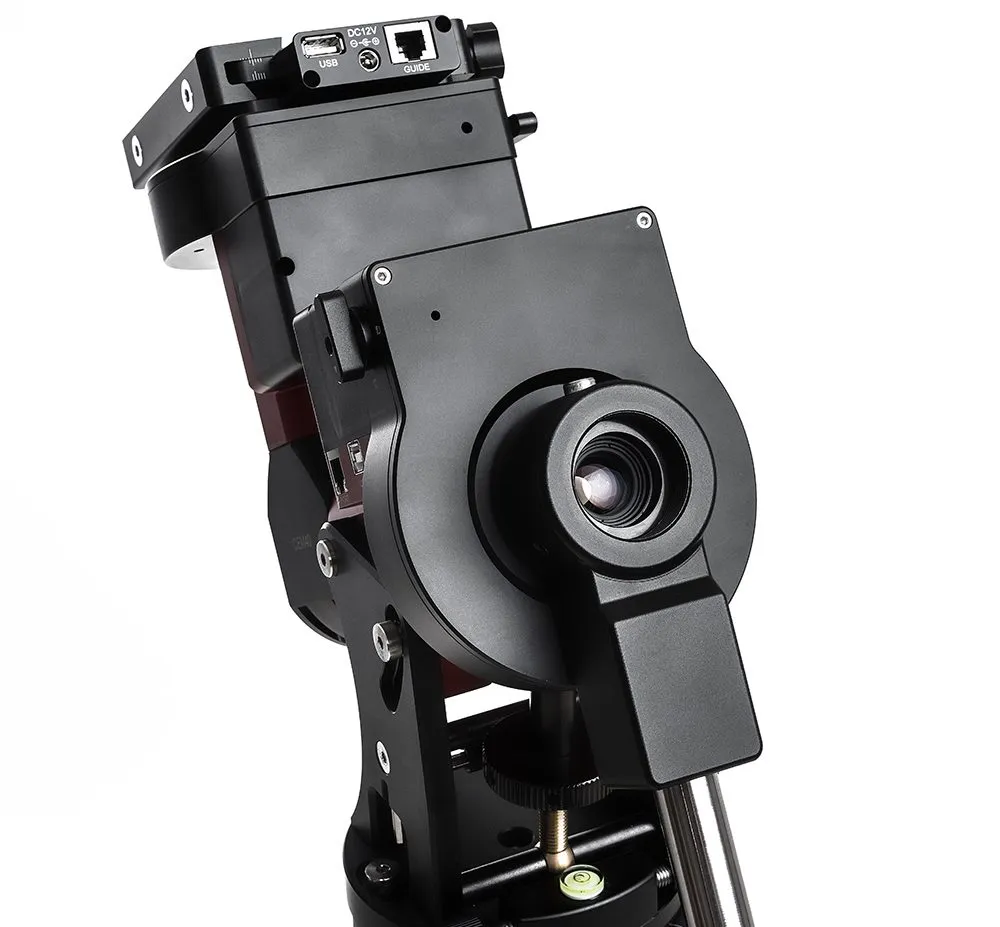The iOptron CEM40 (centre-balanced equatorial mount) is an unusual design. If you’re used to looking at ‘traditional’ German equatorial mounts (GEMs) the CEM can initially be quite perplexing.
In the CEM design, the declination axis is offset to the lower end of the RA (right ascension) shaft, on the opposite end to the counterweight.
This shifts the load’s centre of gravity onto the RA axis so that it sits centrally on the shaft rather than at one end, as would be the case with a traditional GEM, offering a number of advantages (see ‘Style with substance’ section below).
At a little over £1,400 the CEM40 is an interesting prospect. With features normally found on high-end mounts, it also maintains a strong foothold in the portable grab-and-go arena.
It has an impressive 18kg load capacity (for comparison a Celestron C11 optical tube weighs 12.5kg), free-running lockable clutches, permanent periodic error correction, GPS and a semi-automatic electronic polar-alignment system.
It doesn’t skimp on quality: the mount body is solidly constructed from CNC machined aluminium. We were also impressed with the quality of the online electronic documentation provided for this mount.
It took us through the initial setup procedures in a well-organised, logical step-by-step fashion.

Testing alignments
The iPolar electronic polar alignment system recognises stars around your local celestial pole but doesn’t need to be able to see the pole itself; a useful option if visibility is limited.
On our first outing, our rough polar alignment was too rough and the star recognition system failed due to the pole being outside the image frame.
After realising what we’d done, we moved the mount into a better position. Although we assumed we would have to initiate another match attempt ourselves, the recognition software had kept watching and reported a match.
The software places a cross and circle on your laptop’s screen, typically misaligned. Adjusting the mount’s altitude-azimuth position is required to get both shapes to line up.
A couple of hex bolts need loosening to do this and a magnetically clipped hex key is kept on the mount.
The software zooms in on the cross and circle when alignment gets close. A 32-channel GPS dongle is provided, supplying location, date and time information automatically.
Once polar alignment has been achieved, it’s a simple process to run a one-, two- or three-star alignment to refine the mount’s pointing model.
We selected numerous targets. With a camera attached to a 1,000mm focal length scope, we instructed the mount to slew to each target and took an image. The object was fairly well centred each time.
Taking control
The CEM40 can be controlled via an optional Wi-Fi dongle, a USB connection to a computer running the Ascom platform, or via the Go2Nova 8407+ hand controller.

The GoToNova Go-To system has a database of 212,000 objects, all accessible via this controller. Native mount periodic error is quoted at +/-7 arcseconds.
We were able to set up the CEM40 in a couple of minutes with the ability for precise Go-To and excellent unguided tracking, achieving exposures at 1,000mm focal length of 2, 3 and 4 minutes without noticeable star elongation.
For extended exposure, the CEM40 provides an ST4-compatible guide port for autoguiding functionality. This is where the 18kg-load capacity is important, allowing for a substantial guidescope to be fitted to the main imaging scope.
Overall, we were impressed with the CEM40. It’s well designed and offers substantial functionality. It’s stable even with heavy loads, relatively quiet in operation and is ideal if you need to move location to get under dark skies.
Its excellent Go-To and tracking precision also make it an exciting prospect for astrophotography. Overall, it’s a great investment for both beginners and experienced astronomers alike.
Style with substance
The CEM40’s shape is distinctive and unusual. A conventional German equatorial mount places the declination axis at one end of the RA shaft, carrying both the mass of the counterweights and scope.

In the CEM design, the declination axis is staggered so the counterweights remain at one end of the RA axis with the scope sitting at the other.
This design balances the RA axis, placing its centre of gravity directly over the tripod or pier. The lack of bias to one side of the RA shaft helps improve stability.
It also makes fine adjustment of the mount’s altitude, used when fine-tuning the polar alignment, easy.
The CEM40 is designed to operate from the equator to 60° of latitude. It achieves this by providing two latitude ranges of 0-35° and 25-60°.
A straightforward mechanical procedure is required to select your desired range before initial operation.
The CEM40 operates via high-resolution stepper motors capable of 0.08 arcsecond movement steps combined with 110mm, 216 teeth RA and dec. gears.
Slew rates can be set from sidereal to 4.5° per second.
Cable management
A cable management plate on the dovetail clamp offers a USB 2.0 (but no USB 3.0) type-A connector, 12V DC (3A maximum current) and an ST4-compatible autoguider port.

It’s used to maintain tidy connections to mounted equipment and can be moved to the other end of the clamp assembly if required.
Go2Nova handset
The mount is natively controlled by a Go2Nova 8407+ hand controller. This presents a number pad, four direction arrows, menu, back and enter buttons.
Its LCD screen is heated to permit operation in temperatures as low as –20˚C and has a generous 8x21 character display which we found was well utilised.
iPolar electronic polarscope
Accurate polar alignment is performed via an in-built iPolar electronic polarscope. A dedicated USB port is provided for connection to your computer or laptop running the iPolar software.
Once connected to the scope, the software is able to detect and identify the stars around your local celestial pole, indicating how to adjust the mount for accurate polar alignment.

Self-centring dovetail clamp
The CEM40’s supplied 5-inch iOptron Universal Saddle can accommodate Vixen or Losmandy-D sized dovetails. A small mechanical procedure is required to set the clamp for the appropriate dovetail type.
The position of a fixed block – which the clamp locks the dovetail against – can be adjusted to ensure perfect dovetail rail-centring.
Free-running bearings
The CEM40 has free-running bearings. When an axis clutch is disengaged, it’s able to rotate freely without significant resistance.
As long as you keep hold of your scope when first disengaging the clutches, this allows you to fine tune your equipment’s balance to perfection.
Once achieved, clutch switches re-engage each axis to its drive system.
Vital stats
- Price £1,445 (including VAT)
- Type Centre-balanced equatorial mount (CEM)
- Load capacity 18kg
- Autoguiding Integrated ST4 port
- Tripod Stainless steel, 110cm maximum height
- Weight 7.2kg
- Power 12V 5A (mains power supply included)
- Supplier Altair Astro
- Tel01263 731505
- www.altairastro.com
